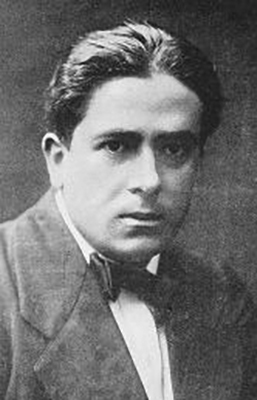FRANCIS PICABIA (1879-1953)
 Francis Picabia was an important French painter who experimented with a wide range of styles throughout his career and whose writings about art were influential in the development of the Dada movement.
Francis Picabia was an important French painter who experimented with a wide range of styles throughout his career and whose writings about art were influential in the development of the Dada movement.
Born in 1879 in Paris, Picabia trained as a painter at the Ecole des Art Decoratifs and began his career as an Impressionist, painting landscapes and country towns much in the style of Camille Pissarro and Alfred Sisley. Picabia married a musicologist named Gabrielle Buffet in 1909 and his relationship with her drew him into a wider circle of artists and writers who were experimenting with current avant-garde ideas including Fauvism, Cubism, Symbolism and Orphism. Espoused by the great French poet, Guillaume Apollinaire, in 1912, Orphism was a purely abstract type of cubism that attempted to create a unity of form, color and movement. Bright colors and a lyric quality distinguish paintings of this school including Picabia’s work at this time.
In 1913, Picabia traveled to New York where he saw some of his own work in the Armory Show. Soaking up the atmosphere of the city, Picabia painted pictures of sky scrapers, automobiles and other facets of urban life. Two years later, Picabia deserted from an official military mission to Cuba and returned to New York where he collaborated with photographer Alfred Stieglitz, assisting with the art magazine 291. Picabia also spent time with Duchamp, founder of the Dada Movement, whom he had previously met in Paris. Duchamp’s influence on Picabia can be seen in Picabia’s paintings up until 1924, which incorporate machinery and ready-made objects in provocative and menacing arrangements. Picabia moved to Barcelona in 1916 where he continued to experiment with Dadaism. In deference to his work with Stieglitz, Picabia published a magazine entitled 391. This garnered support for the Dada movement and had a decisive effect on the movement’s development in Paris.
After 1924, Picabia’s style changed direction along with that of the Dada movement. The movement’s shock value had reached saturation point among Parisian cultural circles and its momentum was usurped by the newest movement, Surrealism. Picabia left Paris and moved to the south of France where he experimented with various styles, both abstract and figurative, often maintaining a sense of the absurd or the disturbing. Looking back across the field of art history, Picabia executed a series of paintings that were indebted to Michelangelo, Titian, Rubens and others, but he always interpreted his borrowings with a sense of irony. Picabia disdained consistency and the wide range of paintings which comprise his oeuvre defy straightforward classifications. It is perhaps most interesting to view Picabia’s work in light of the many and varied artistic movements to which he was exposed and with which he had a significant and dynamic relationship.
